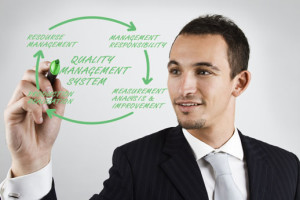Back to Basics
 Manual Handling is one of the most common causes of injury in the workplace. It accounts for over a third of workplace injuries, but sadly, 75% of injuries caused by manual handling are preventable.
Manual Handling is one of the most common causes of injury in the workplace. It accounts for over a third of workplace injuries, but sadly, 75% of injuries caused by manual handling are preventable.
Manual handling describes the action of moving an item or person by lifting, lowering, carrying, pushing or pulling. But it’s not just a case of ‘pulling something’ due to the weight of the item, although this can be a cause of injury. Injuries can be caused because of the amount of times you have to pick up or carry an item, the distance you are carrying it, the height you are picking it up from or putting it down at (picking it up from the floor, putting it on a shelf above shoulder level) and any twisting, bending stretching or other awkward posture you may get in whilst doing a task.
What’s the maximum weight someone can lift?
There are general guidelines – or maximum weights – for men and women. If applying these, no man should attempt to lift anything heavier than 25kg and a woman’s maximum limit is 16kg. But it’s important to take into account other factors which can change the maximum safe weight – such as how high an object will need to be lifted or a person’s health.
If lifting above shoulder height (such as stocking high shelves) men should not lift items heavier than 10kg and women, 7kg – but this maximum weight drops yet again for objects that need to be held away from the body – 5kg for men and 3kg for women. Employers should carry out risk assessments for all lifting since the safe limit depends on so many variables such as the individual involved, the height that they will be lifting and the distance they will be required to carry the object. Everyone is a different size and we all differ in body strength, so it never safe to assume that just because one person can lift something everyone can.
How to lift safely:
Plan ahead before lifting
Knowing what you’re doing and where you’re going will prevent you from making awkward movements while holding something heavy. Clear a path, and if lifting something with another person, make sure both of you agree on the plan.
Lift close to your body
You will be a stronger, and more stable lifter if the object is held close to your body rather than at the end of your reach. Make sure you have a firm hold on the object you are lifting, and keep it balanced close to your body.
Feet shoulder width apart
A solid base of support is important while lifting. Holding your feet too close together will be unstable, too far apart will hinder movement. Keep the feet about shoulder width apart and take short steps.
Bend your knees and keep your back straight.
Practice the lifting motion before you lift the object, and think about your motion before you lift. Focus on keeping you spine straight. Raise and lower to the ground by bending your knees.
Tighten your stomach muscles.
Tightening your abdominal muscles will hold your back in a good lifting position and will help prevent excessive force on the spine.
Lift with your legs
Your legs are many times stronger than your back muscles. Again, lower to the ground by bending your knees, not your back. Keeping your eyes focused upwards helps to keep your back straight.
If you’re straining, get help
If an object is too heavy, or awkward in shape, make sure you have someone around who can help you lift.
Take a look at our fact sheet, What’s so Dangerous about Manual Handling? for more information. If you need advice or training in manual handling or moving and handling people, drop us an email or call 0333 321 0131.

